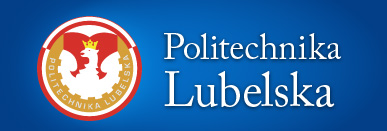Numerical methods in understanding reaction pathways NOx oxidation
© 2016 Budownictwo i Architektura. Publikacja na licencji Creative Commons Attribution-NonCommercial-ShareAlike 4.0 (CC BY-NC-SA 4.0)
Cytowanie: Budownictwo i Architektura, 15(3) (2016) 075-081, ISSN 1899-0665, DOI: 10.24358/Bud-Arch_16_153_06
| Historia: | Opublikowano: | 01-09-2015 |
|---|
Streszczenie:
Different quantum chemical models were applied in energetic analysis of process of oxidation of NO and NO2 through reaction with ozone generated by non-thermal equilibrium (low temperature), atmospheric pressure plasma. The potential energy surfaces of systems comprising NO and NO2 with ozone were characterized. The NOx oxidation processes well known, at the molecular level, were modelled by ab initio quantum methods to calculate the total reaction energy, Et, of each step in the reaction chain. Chemistry was further applied in an attempt to detect the presence of any transition states to calculate the activation energy, Ea, of reactions (1) NO + O3 and (2) NO2 + O3 using the MP2 level of theory with three different basis sets and fine potential energy scan resolution.
Słowa kluczowe:
NO and NO2, O3, DFT, CASSCF, CCSD, MP2
Numerical methods in understanding reaction pathways NOx oxidation
Abstract:
Different quantum chemical models were applied in energetic analysis of process of oxidation of NO and NO2 through reaction with ozone generated by non-thermal equilibrium (low temperature), atmospheric pressure plasma. The potential energy surfaces of systems comprising NO and NO2 with ozone were characterized. The NOx oxidation processes well known, at the molecular level, were modelled by ab initio quantum methods to calculate the total reaction energy, Et, of each step in the reaction chain. Chemistry was further applied in an attempt to detect the presence of any transition states to calculate the activation energy, Ea, of reactions (1) NO + O3 and (2) NO2 + O3 using the MP2 level of theory with three different basis sets and fine potential energy scan resolution.
Keywords:
NO and NO2, O3, DFT, CASSCF, CCSD, MP2
Literatura / References:
1. PQS version 3.1, Parallel Quantum Solutions, 2013 Green Acres Road, Fayetteville, Arkansas 72703, USA.
2. Helgaker T., Jensen H.J.Aa., Joergensen P., Olsen J., Ruud K., Aagren H., Auer A.A., Bak K.L., Bakken V., Christiansen O., Coriani S., Dahle P., Dalskov E.K., Enevoldsen T., Fernandez B., Haettig C., Hald K., Halkier A., Heiberg H., Hettema H., Jonsson D., Kirpekar S., Kobayashi R., Koch H., Mikkelsen K.V., Norman P., Packer M.J., Pedersen T.B., Ruden T.A., Sanchez A., Saue T., Sauer S.P.A., Schimmelpfennig B., Sylvester-Hvid K.O., Taylor P.R., Vahtras O. Dalton, a molecular electronic structure program, Release 1.2, 2001.
3. Frisch J. et al. Gaussian 03, Revision V.05, M. Gaussian, Inc., Wallingford, CT, USA , 2004.
4. Jaroszyńska-Wolińska J., Kumar M., Quantum chemical modeling of the ozone –based NOx oxidation process. Proceedings of the 11th Annual International Symposium of the HAKONE, Oleron Island, France, 7-12 September 2008, Vol.2, pp. 402-407.
5. Jaroszyńska-Wolińska J., Garabato B. D., Alam J., Reza A., Kozłowski P.M. Structural and electronic properties of an [(Al2O3)4]+ cluster Journal of Molecular Modeling 21 2015 170-179

